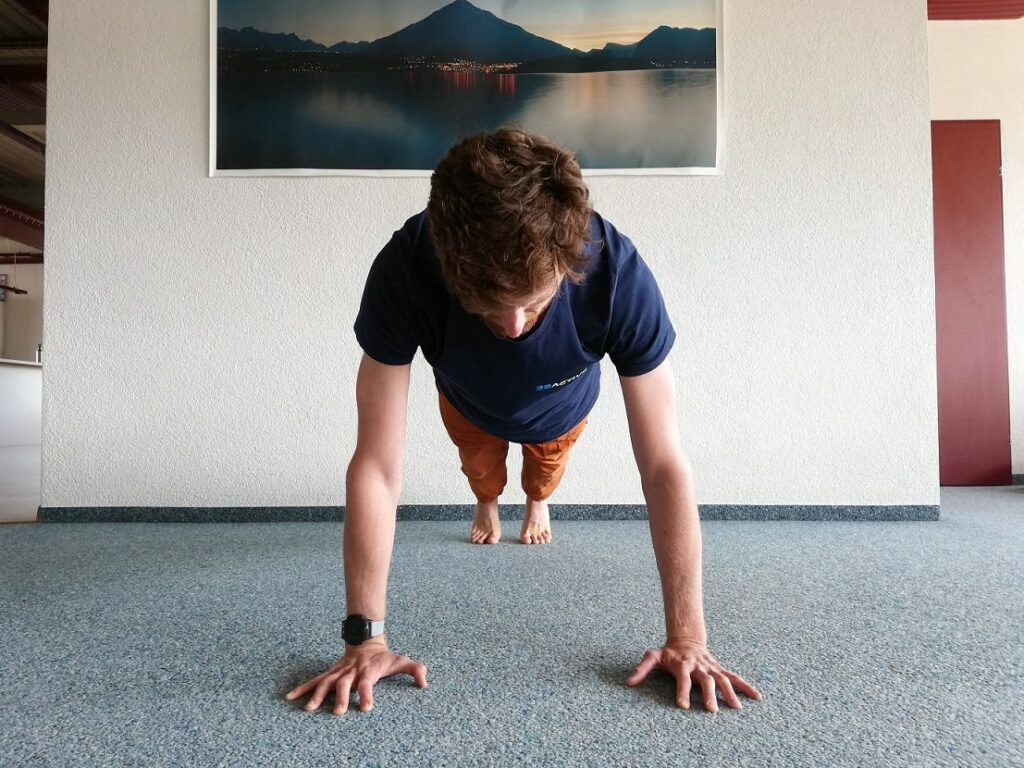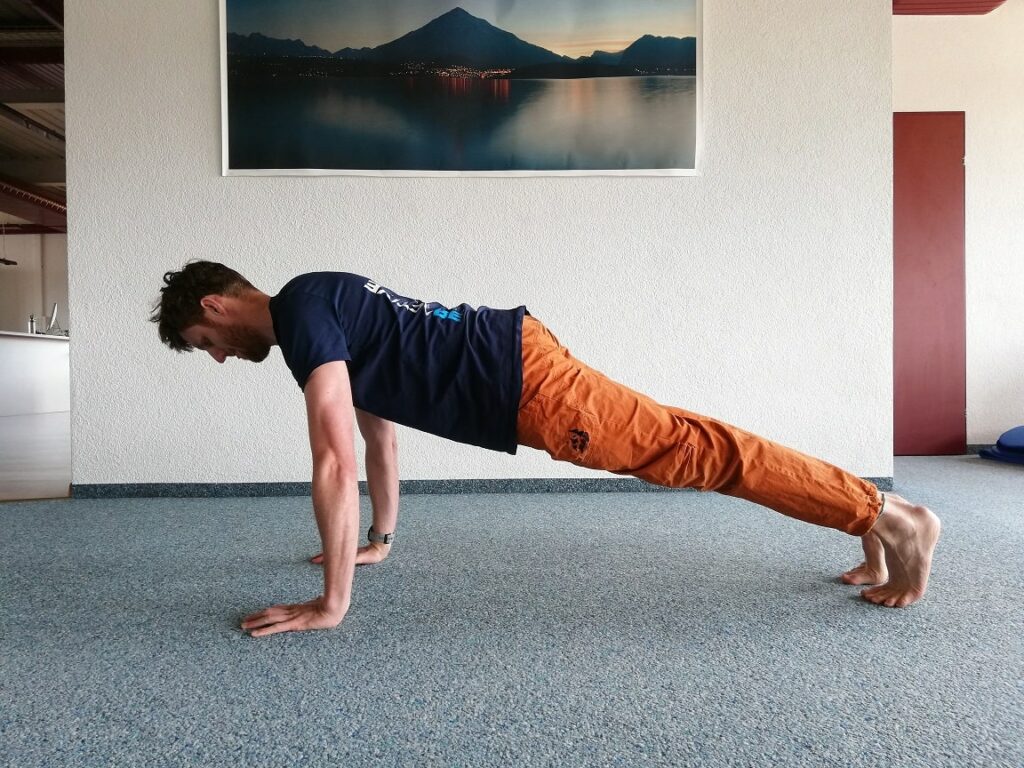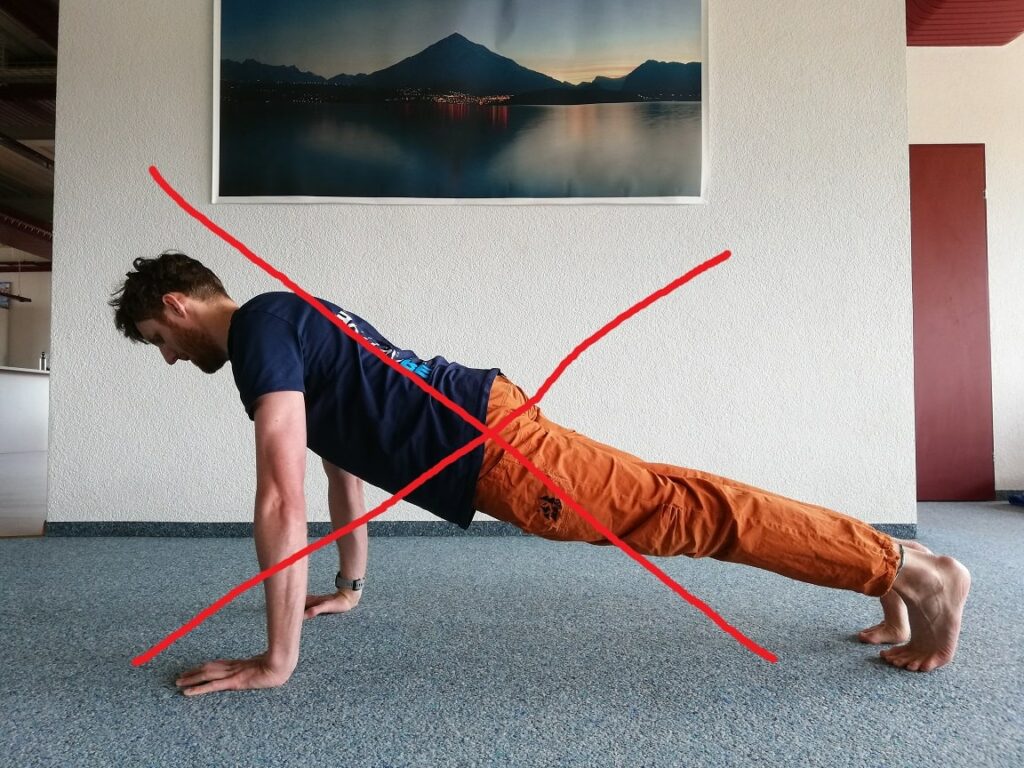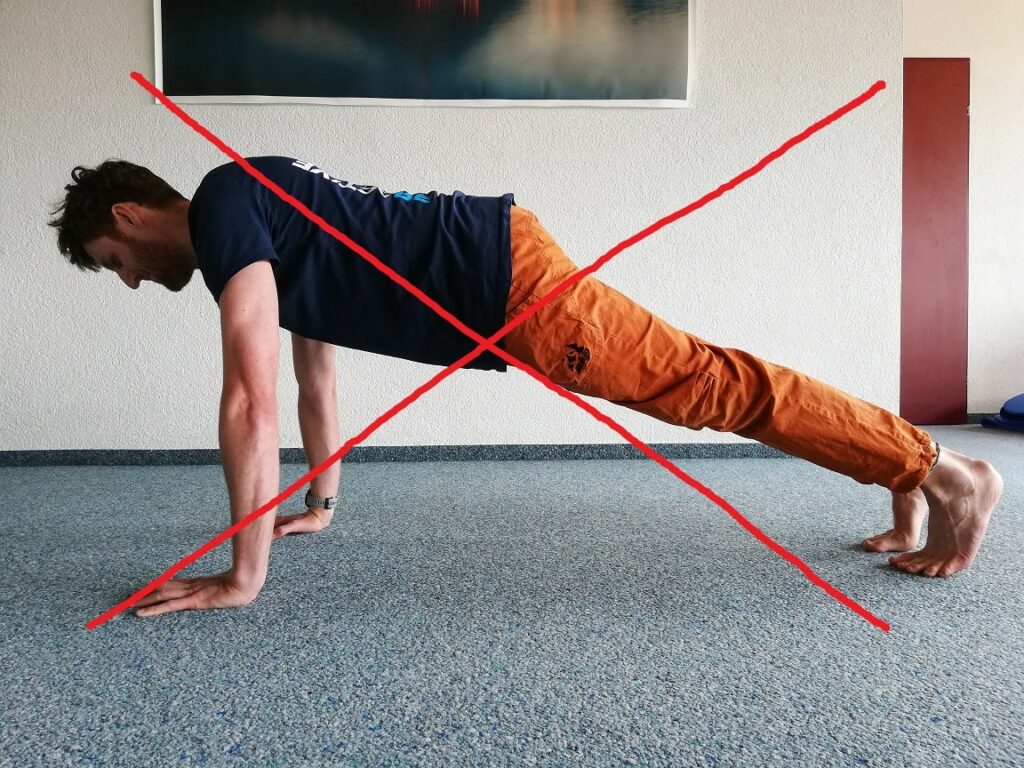Push-ups aren’t necessarily bad for shoulder impingement. This depends on the severity of your shoulder impingement and other influencing factors like shoulder mobility, thoracic mobility, and shoulder stabilizer strength.
As you can see, it’s not black and white.
That’s why in this blog I’ll help you answer two questions:
- Why do you want to do push-ups?
- Why do you have shoulder impingement?
With the answer to these two questions, you’ll know if push-ups are the right exercise for you.
After that, I show you how to do push-ups correctly and how you can change their intensity to fit your needs.
So, are you ready?
Let’s dive in!
1. What are the Benefits of Doing Push-ups Daily?
Doing push-ups daily will help you develop strong shoulder, chest, and core muscles. Besides, you’ll learn to “carry” your bodyweight and get better at generating tension all throughout your body.
The question is though, why do you want to do push-ups?
Push-ups are considered excellent exercises to do opposition training for climbing. Since climbing itself involves a lot of pulling, adding pushing exercises regularly will prevent muscle imbalances. Which in turn, will reduce the chance of an injury.
However, is a push-up the best solution for your muscle imbalance issue?
Don’t get me wrong, I do believe push-ups are a great exercise, because of all the reasons I mentioned above. Even more so, you can do them anywhere and you can increase their intensity simply by doing more repetitions, or by adding weight.
Still, this doesn’t mean, that push-ups are the right exercises for your particular situation.
Because if we talk about balancing out musculature, you should know that it’s not said that your pushing muscles are underdeveloped just because you climb. It could just as well be that you need to train other muscles to resolve imbalances.
So, instead of doing push-ups to level out a supposed muscle imbalance due to climbing – be more specific.
What are you lacking? Core strength, shoulder stability, shoulder mobility, pulling power or is general strength an issue?
This list could be endless. But the bottom line is, what do you need to improve? And are push-ups going to help you to improve this?
2. What Causes Shoulder Impingement?
There is just one reason a climber develops shoulder impingement: overuse.
However, some factors make a shoulder impingement more likely to develop. Such as:
- Weak rotator cuff muscles
- Weak scapular retractors
- Weak core muscles
- Lack of shoulder mobility
- Lack of thoracic mobility
- Shoulder instability
- Mental Stress
- Bad Climbing Technique
- Muscle Imbalance
If you have any of the above it’s best to solve these besides reducing your climbing intensity.
Moreover, if you have either a lack of shoulder mobility, thoracic mobility, or a muscle imbalance that would be worsened by push-ups, you shouldn’t do them at all.
Why is that?
Because mobility issues change movement patterns and inhibit, in this case, your push-up technique. Furthermore, if push-ups increase a muscle imbalance, it’s not the right exercise for you.
So,
- Reduce your climbing intensity to a level where the symptoms of your shoulder impingement level out
- If relevant in your case: increase your thoracic spine and shoulder mobility and fix muscle imbalances
- Now, it’s time to improve any left-over deficiencies and;
- You can incorporate an easy variety of push-ups into your training plan, as long as it doesn’t provoke any symptoms
One more time, if you have mobility issues or a muscle imbalance, push-ups are a no-go. Otherwise, fix the other factors that influence your shoulder impingement and start with a light version of the push-up.
Now you know if push-ups are a good exercise for you. Let’s look at what the right push-up technique looks like.
And on a side note, I prefer to refer to shoulder impingement as a sensitive shoulder. You can read my motivation to do so in a recent blog about the 11 differences between shoulder instability & shoulder impingement. For the remainder of this blog though, I’ll stick to shoulder impingement.
3. How to do a Push-up Correctly
There are a million variations on the push-up. Wide stance, narrow stance, you name it. The technique I’m going to discuss here is for the classic push-up.
Here’s how to do a technically correct push-up step by step.
3.1 Hands under Shoulders
Your hand position has a direct effect on the intensity of a push-up. So, where should you place them?
For a classic push-up, your hands should be positioned at the same width as your shoulders. If you then choose to place them closer to your head, the push-up will get heavier. Put your hands closer to your chest, and the push-up will get easier.
Taking shoulder impingement into consideration, it’s best to put your hands shoulder-width, at the height of your chest.

3.2 Plank Position
Once you placed your hands correctly, extend your body and place your feet next to each other. Keep them in a neutral position. So, don’t push to the front, nor back.
Then bring your pelvis in between your spine and legs, creating a straight line. While doing push-ups, always maintain this straight line. This is a sign of proper core tension.
So, squeeze your glutes, tense your abs, and straighten your back.


Wrong push-up position: arched back 
Wrong push-up position: Flexed hips
Now you’re almost ready to move your body up and down. The only thing left to do is to screw your elbows out.
3.3 “Screwing” Your Elbows Out
Screwing your elbows out ensures proper tension in your rotator cuff muscles and shoulder capsule. It’s like you’re wringing a towel to get the water out.
As a result, your shoulders will depress and you’ll be able to do a perfect push-up. Engaging the right muscles, with the right amount of tension.
3.4 Lower Slowly
As soon as you put proper tension on your body and shoulder girdle, you’re ready to start push-up and down. I think it’s best to lower slowly. This way you can focus on your posture and the tension in your shoulders.
3.5 Push-up Fast
Finally, push-up faster – but with a strong emphasis on body tension – to the plank position. And repeat until you reach the desired number of repetitions.
Now before you head off to start doing perfect push-ups, remember this: whenever your technique fails, stop your push-ups. Regardless if you’re tired or not. As a climber, when doing push-ups, is not the moment to push yourself (leave that energy for sending hard routes). If you approach your push-ups like this, it’ll be less likely that you force your shoulder impingement as well.
4. How Can I Modify my Push-ups?
There are several ways to make the classic push-up harder or easier.
4.1 Wall Push-up
If you’re suffering from shoulder impingement, I recommend you always start with the wall push-up. It’s better to start too light and progress than to hurt your shoulder right off the bat.
Doesn’t your shoulder hurt during wall push-ups?
Then you can decrease the angle by doing a push-up on a table. Then, on a chair, where after you might be able to do them on the floor.
But only, if you’re form is flawless and your shoulder doesn’t hurt.
4.2 With Elastic Band
Another way to make the push-up lighter is by wrapping an elastic band around your waist and connecting it to something above you. This could be anything from a table to a barbell.
4.3 TRX Push-Up/Ring Push-up
I’ve come to love the TRX bands for their versatility. It’s easy to make exercises harder and easier within seconds, and the free-hanging slings stimulate your stabilizing muscles more. Thus, if you have a TRX, Rings, or something of the likes at home, they’re a great tool to make your push-ups both harder and easier. Just do them more vertical, or more horizontal.
And on top of that, it’s easier to change your hand position which puts less stress on your shoulder joint.
4.4 One Arm Push-Up
There is some evidence that suggests that training the opposite side benefits the other. This is called cross-education of strength and can increase the strength of the untrained limb by around 10%.1 Meaning, that if your shoulder impingement is debilitating you might consider doing a one-armed push-up with your healthy arm. That way you stay strong there and can translate this strength to the contralateral side once it’s healed.
5. Important Take-Aways
Push-ups are a great exercise. But like with every exercise, it depends on your situation if this is the case for you.
Align your exercise decision always with your goals and with what you need to get there. If a push-up fits your goals and needs, then start against the wall. This will help you progress with proper technique and reduces the chance of forcing your shoulder impingement.
6. Citations
- Manca A, Dragone D, Dvir Z, Deriu F. Cross-education of muscular strength following unilateral resistance training: a meta-analysis. Eur J Appl Physiol. 2017;117(11):2335-2354. doi:10.1007/s00421-017-3720-z


